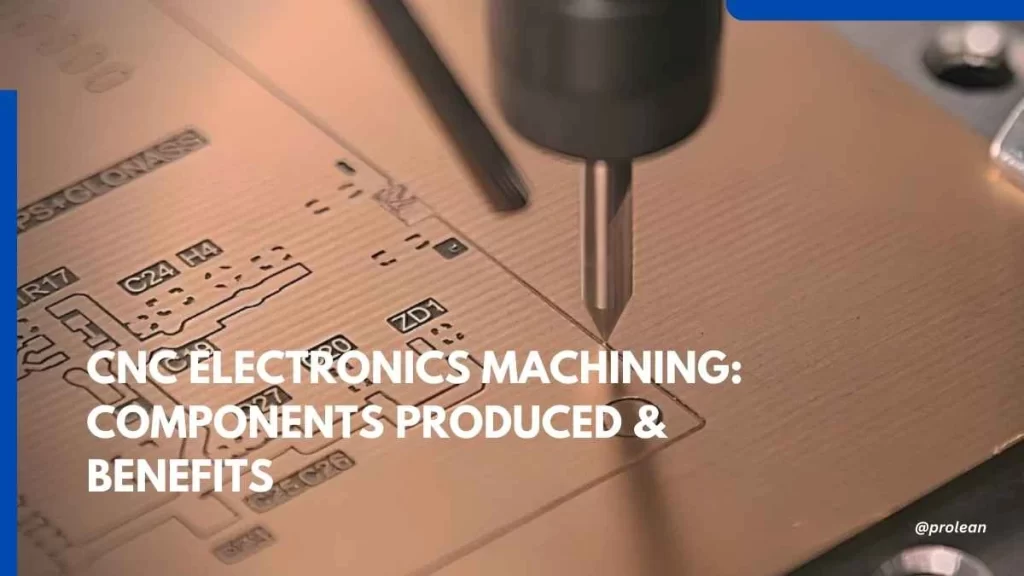
The electronics machining industry is amongst the largest in the global economy. Many electric and electronic items, from sophisticated machinery to simple equipment and gadgets, use parts produced through cnc precision machining.
Electronic parts are typically created from high-strength metals and plastics. These components entail precise details and specifications. Typically, CNC milling and turning operations are employed to create such features as those of circuit boards. Advanced machining techniques produce high volumes, even for challenging parts.
In this guide, learn how CNC electronics machining changes the electronic industry landscape.
Electronics Machining Industrial Development
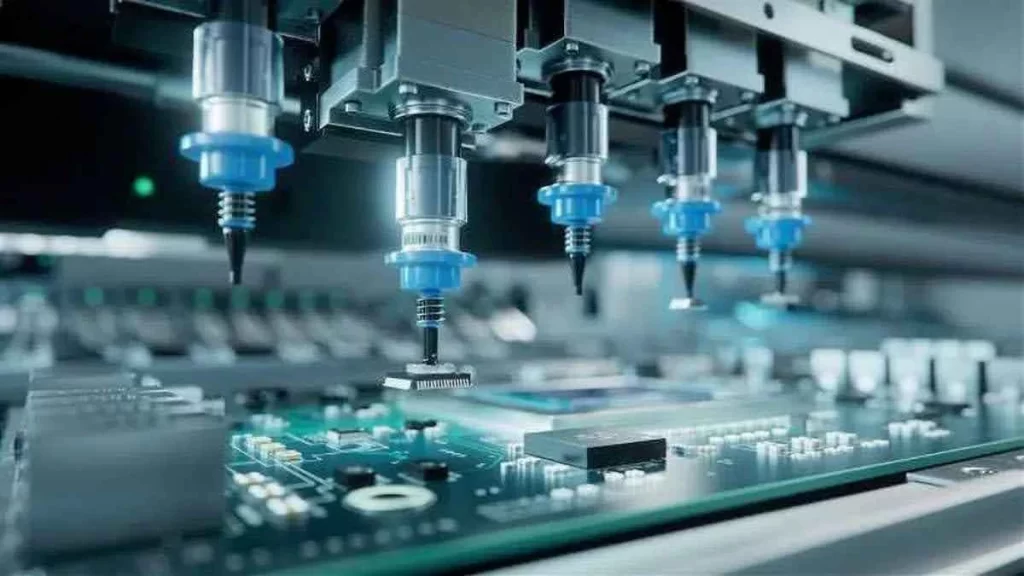
Establishment of the Electronics Machining Industry
The electronics machining industry leads the world and includes many segments. Business-to-business e-commerce drives the electronics industry by improving payments, communication, and supply chains. The electronic sector produced $29 trillion in sales in 2017. Other sectors are consumer electronics, electro-sonic, and semiconductor industries. Every industry plays a major role in the innovation and today’s world trade.
The most common electronics machining components include capacitors, diodes, semiconductors, and transistors. In addition, Radios, computers, televisions, and smartphones all use these electronic components.
Try Prolean Now!
How CNC Machining Benefits the Electronics Industry
The cnc machining process has an unmatched precision and ability to produce reliable electronic components. The technology can machine conductive and non-conductive metal. Moreover, a highly rigid and large variety of engineering plastic materials can also be machined precisely.
CNC machining delivers fast production runs in minimal time. `The absence of tooling stages increases manufacturing speed while controlling dimensions. In addition, the method goes beyond additive manufacturing by minimizing surface finish and tolerance limitations.
Electronic systems are precise and require intricate parts with tight cnc machining tolerance. Precision machining provides replicable outcomes for complex geometry such as circuit boards. CAD software further minimizes these processes, allowing for quick design changes and the best toolpath planning. Here are a few benefits that dictate why precision CNC machining is so popular:
- You can Fabricate a Range of Materials: CNC machining works with a wide range of materials, whether metal or plastic. It’s not limited here. Due to this flexibility, design manufacturers can make various electronic components.
- Precision You Can Rely On: In the electronics industry, accuracy is paramount since small detailing counts. CNC machines precisely remove material to create intricate components. These components ensure accurate fits in portable electronics and complex systems. This precision supports reliability and functionality in advanced designs.
- Consistent and Reliable Components: The major strength of CNC machining is the level of dependability. CNC machines are also beneficial for manufacturing one prototype or several thousands of components. CNC machining produces negligible defective parts. Therefore, it is ideal for prototypes and mass production.
- Faster Production: Compared with other cutting methods, such as 3D printing, CNC machining is relatively faster, and quicker. However, the speed still doesn’t compromise the quality and is perfect for industries that require speed alongside the high quality of the parts produced.
All these factors dictate CNC machining plays an important role in electronics machining parts whether for prototypes or production runs.
Examples of CNC Machined Electronic Components
Some commonest types of CNC electronic components include;
CNC Machining Printed Circuit Boards (PCBs)
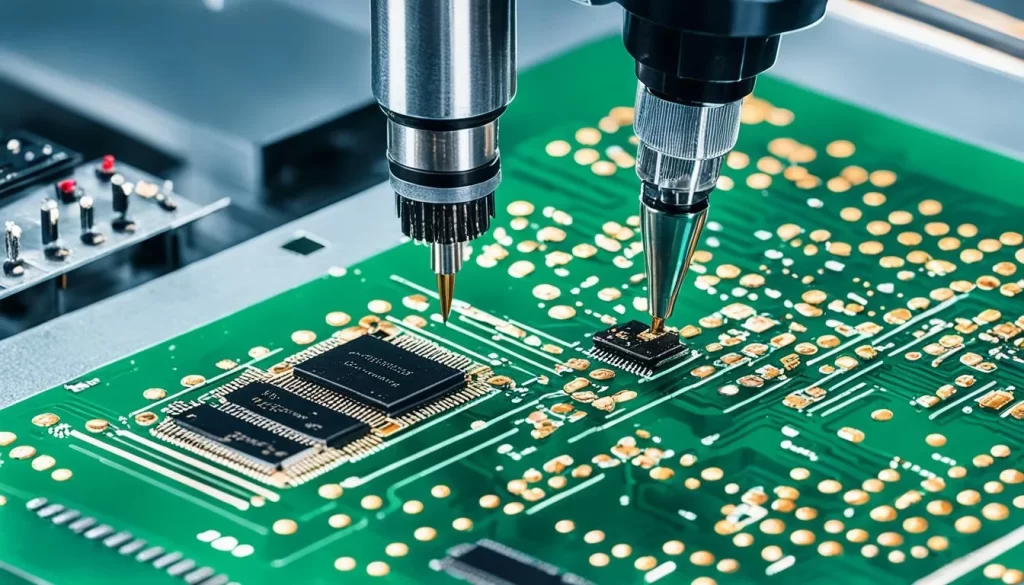 PCBs CNC Machining
PCBs CNC Machining
PCBs are extremely identical electronic machining components of almost all electronic devices. Since they interconnect many elements of equipment. PCBs typically consist of conductive strips, generally copper, on an insulating substrate material.
The conventional process of making PCBs involves using chemical etching in which the wanted copper is removed by chemistries such as ferric chloride. Through the CAD/CAM application, PCB designs can be elaborated in the architectural modeling and produced on CNC milling kits. This method is especially useful when chemical etching affects the electrical characteristics or the application’s safety.
CNC Machining Semiconductors
![]() Semiconductors CNC Machining
Semiconductors CNC Machining
The electronics machining industry depends particularly on semiconductors to support device miniaturization. Accuracy is a fundamental aspect of producing semiconductor parts, including using wafer chucks, gas distribution plates for thin film deposition, and flex circuit stiffeners.
CNC machines can work on semiconductor materials such as silicon, aluminum nitride, and germanium. Many of these components may need to be built with high precision to be inserted into small electronic equipment.
CNC Machining of Connectors and Sockets
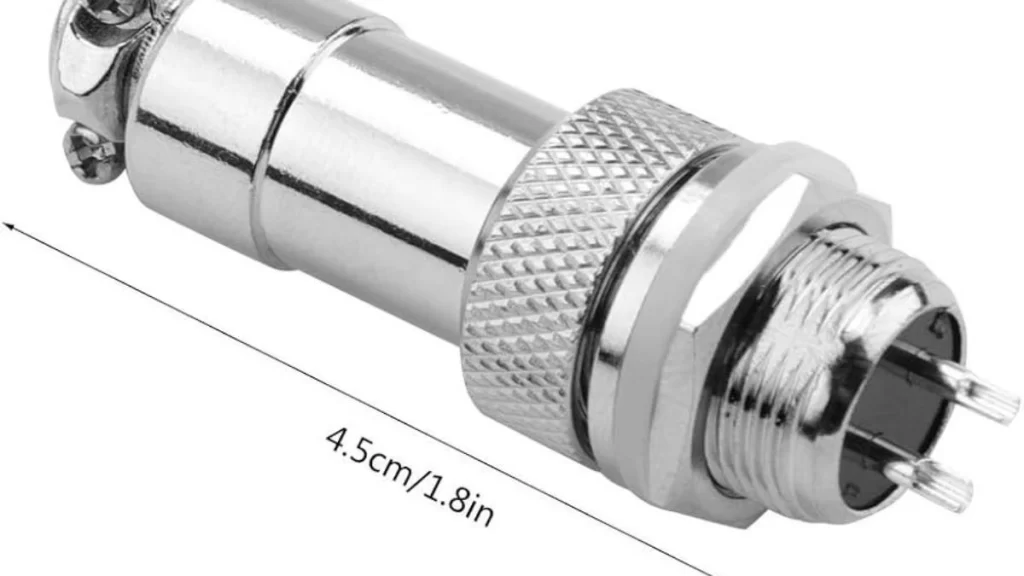 CNC machining of socket
CNC machining of socket
Connectors and sockets are commonly used on electronic devices to allow their interconnection. Interfaces such as USB, audio interfaces, and device pins are critical to require high accuracy in manufacturing.
CNC machining is well suited to making these parts with strict dimensional controls that preclude failure in connectivity. Connectors and sockets are made of copper alloys and other conducting metals as their general construction material. CNC machining makes these parts strong and conductive, which is crucial for electronics.
CNC Machining Heat Sinks
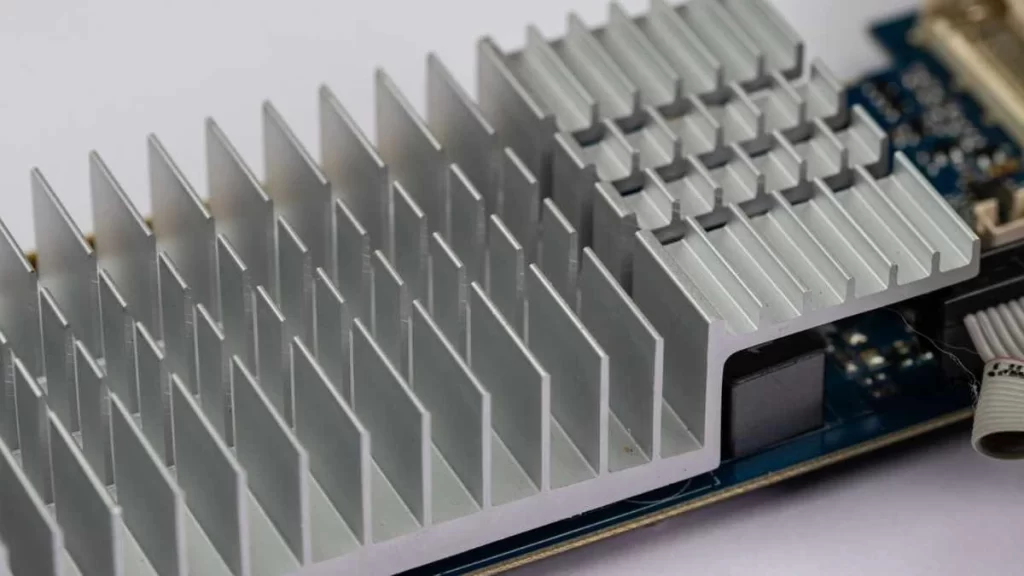
Heat Sinks CNC Machining
Heat sinks improve electronic functionality by dissipating heat. They are commonly used in computers to prevent parts from overheating. CNC machining is preferred for heat sinks, since, they require complex shapes, sizes, fin arrangements, and other design specs. These sinks are typically made of cnc machining materials including aluminum, copper,r and copper alloys, Inconel stainless steel, etc.
CNC machined heat sinks work more effectively with high thermal conductive materials. They are ideal for rapid prototyping and perfect for situations requiring small batches of parts.
Consumer Electronics
CNC electronics machining plays a major role in fabricating consumer electronics. Business giants such as Apple use CNC milling in the production of strong and functional products. For instance, the MacBook’s body of Apple is built from a single aluminum block. The body is milled to the right shape and dimensions(thickness) for strength and aesthetic value. This approach produces durable products with high-quality finishes. It sets a strong standard for excellence.
Other manufacturers also use CNC technology for fashioning such parts as casing for smartphones, camera bodies, and other parts of consumer electronics.
Casings and Enclosures
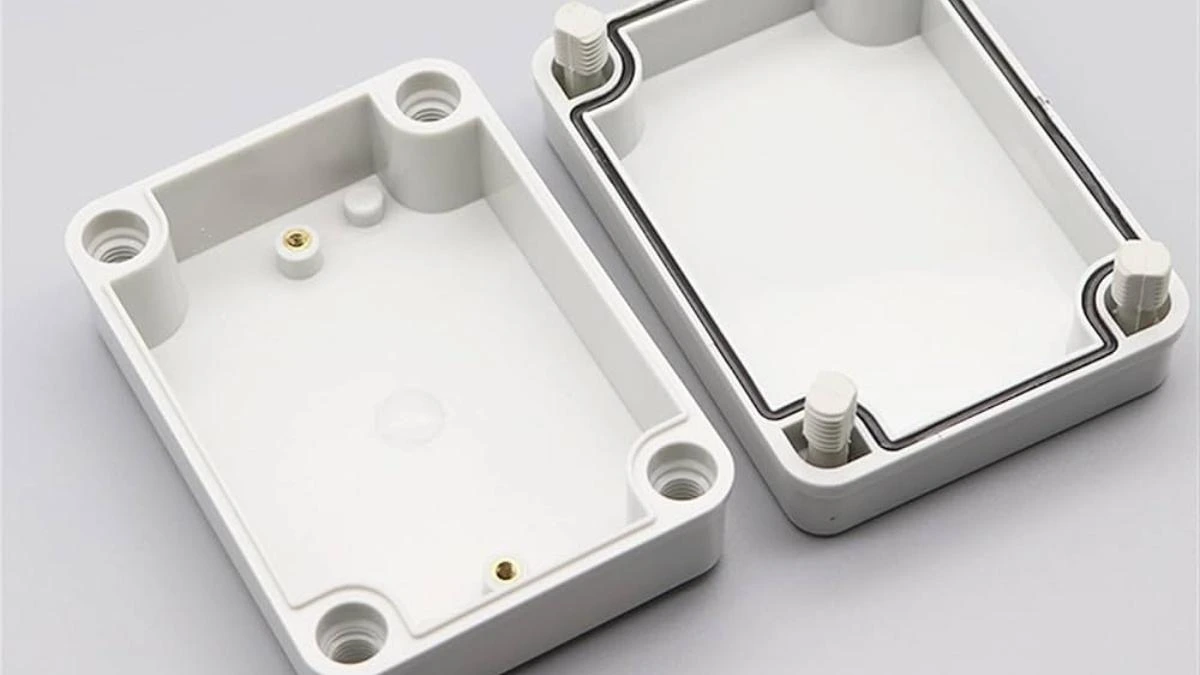
CNC machined enclosures
As mentioned earlier, the electronics machining of the device needs to be very strong and accurately constructed shells and enclosures to safeguard inner parts. Although there are many machining options, such as molding and die casting, besides CNC machining. However, CNC machining provides higher dimensional accuracy and meets more stringent accuracy requirements.
CNC casings are ideal because of their low surface roughness. This feature makes machining complex geometries easier. They are extensively used in applications such as the body of laptops, mobile phones, digital cameras, and other devices where both strength and appearance are paramount.
Try Prolean Now!
Key CNC Machining Techniques for Electronics Machining/Manufacturing
Here are the fabrication techniques for developing CNC electronic parts;
Electronics CNC Milling
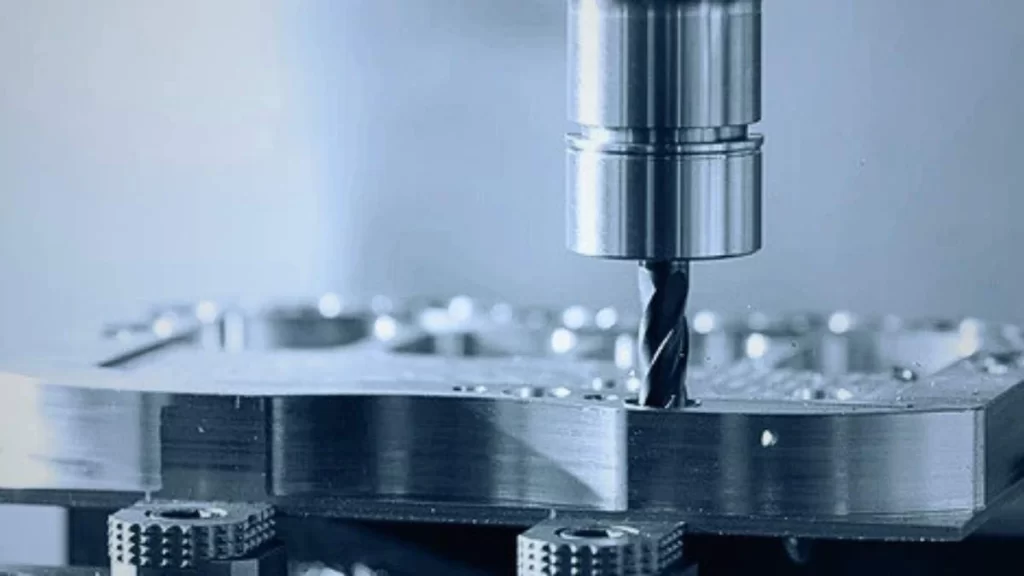
Electronics CNC Milling
Computer numerical control milling is widely used in the electronics industry as a basic process for the production of parts with complex shapes. Here the workpiece is mounted on a bed. Then, it translates on the ‘X, Y, Z’ axis, and the cutter translates the ‘Z’ axis to shape out the workpiece.
CNC milling is precisely used for electronics such as connectors, casings, and heat sinks. Since it is extremely accurate, and for more detailed, and complex geometries, 5-axis milling offers greater flexibility and precision. The benefits of enabling the formation of more elaborate forms and closer dimensional control are crucial in the production of small-sized or miniature electronic components.
Electronics CNC Lathes
CNC lathes are typically used for the production of cylindrical or symmetrical parts. These components are used in connectors, pins, and other electronic contacts. A workpiece is held by a rotating chuck and cutting tools are brought into contact with the material in a high-speed rotation. This enables easy control of the dimensionality of longer parts like the connectors to achieve the right dimensions accurately.
Lathes are common in the first operations of manufacturing, particularly in parts with symmetrical geometry. Today’s lathes have up to 9-axes of cutting. So, the manufacturers can produce more complex shapes without much intervention from the operator. CNC lathes have high-speed features to enable the manufacturing of these parts at a fast pace with precision.
Electronics CNC Swiss Turning
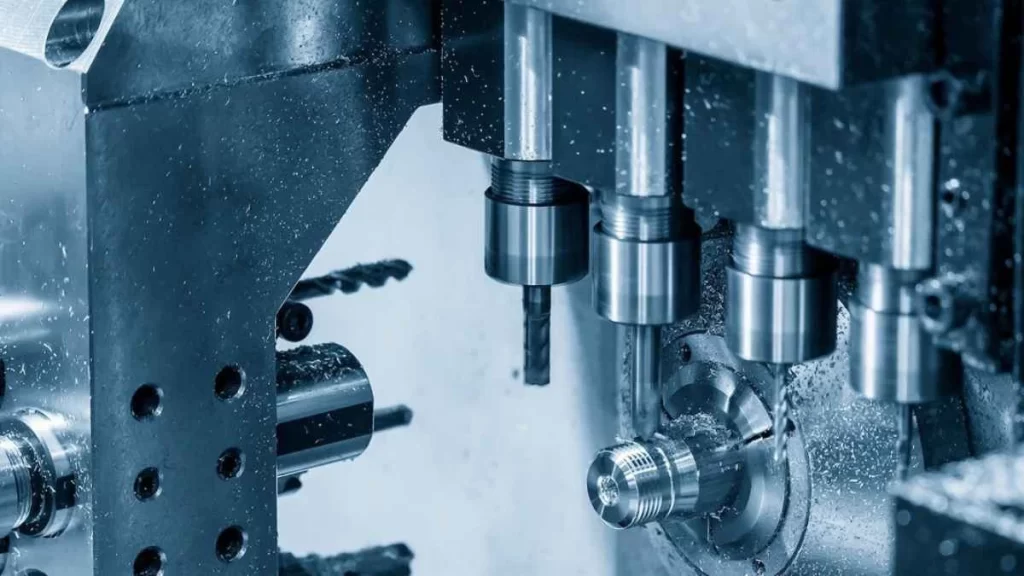
CNC Swiss turning is a special type of turning operation. Like in CNC lathes, the workpiece is turned but in Swiss turning the part is fed in a direction perpendicular to the cutting tools while the cutting tools remain stationary. This movement minimizes the load on the material and thereby results in closer control and finer detail.
Swiss turning can be applied in micromachining wherein the part may be as small as 0.008 inches in diameter. This makes it suitable for the manufacture of products such as microelectronic connectors, small pins as well as other components of high-end electronic devices. In addition, its suitability in the manipulation of sensitive materials has seen it being adopted in microfabrication processes within electronics.
Electronics Micromachining
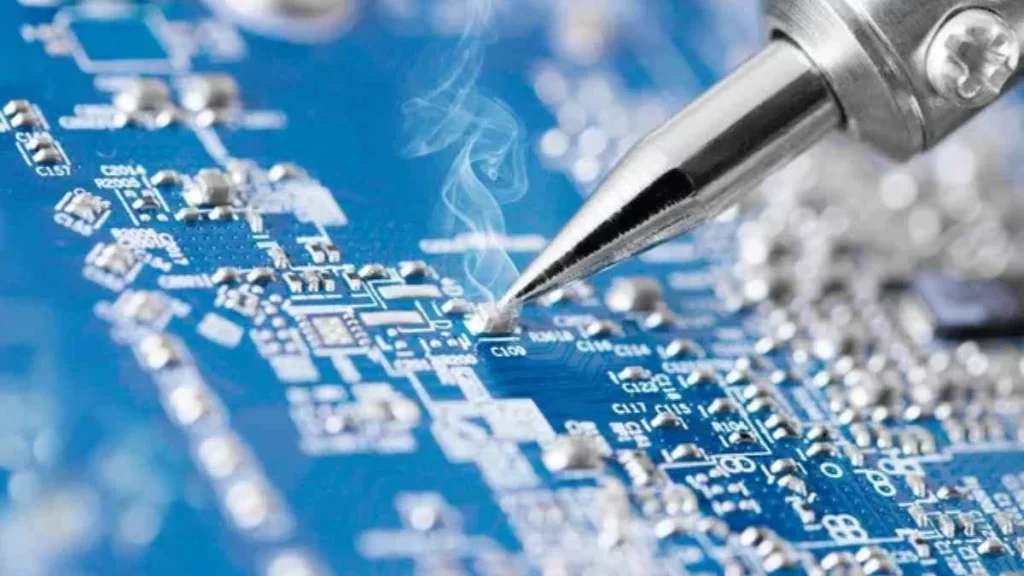
Electronics Micromachining
Micromachining is a step up from CNC machining. It provides further refinement to cutting-edge technology, and its primary function is the creation of extremely small components for use in the electronics industry. This technique employs tools of thickness as thin as 0.015 inches to produce parts as thin as 0.008 inches in diameter.
Carried out using Swiss turning machines, micromachining provides high levels of accuracy due to its tight tolerance levels and is well suited for the production of micro parts used in industries such as medical, communication, and consumer goods.
The procedure calls for very elaborate CAD architecture and degree-level accuracy. So, each electronic miniature component can be assured to perform optimally within the intended gadgets. Thus, micromachining is vital for the development of modern technologies where even the least variation influences the total outcomes.
ProLean Tech: Precision CNC Machining Solutions for Electronic Components
ProLeanTech stands out in providing accurate cnc machining service suitable for the electronics aerospace, and automotive sectors. As a company with considerable experience in prototype designing, and the production of low-volume production runs, ProLean Tech is relied upon by clients for the manufacture of specialized electronic components.
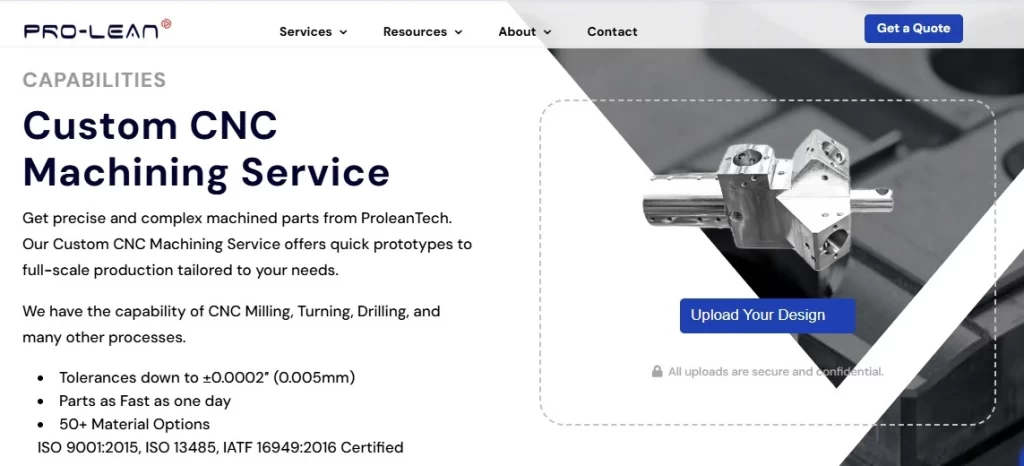
Our advanced CNC Milling, Turning, and advanced finishing services guarantee high precision for each part. Regardless of connectors, enclosures, or heat dissipaters of high complexity, ProLeanTech is willing and capable of performing to the electronics manufacturing expectations. Contact ProLeanTech today to get your bespoke CNC machining solution from our team of professionals.

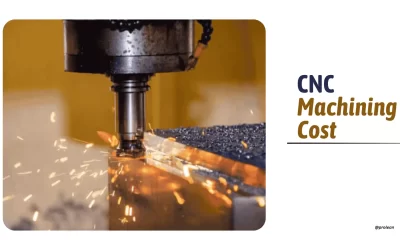
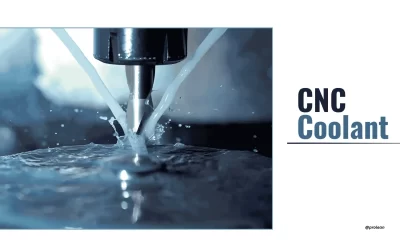
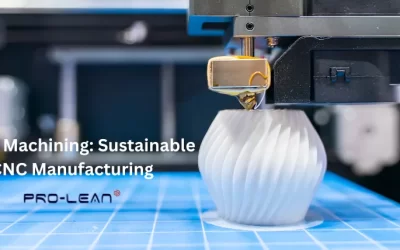
0 Comments